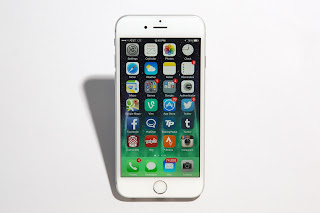Apple last week released its latest mobile operating system, which has some great new features like Apple News, better battery life, and split-screen multitasking. But one new feature, called Wi-Fi Assist, may be eating through your data plan.
 Wi-Fi Assist is one of many new features in iOS 9, and for most users
it’s a great addition to Apple’s mobile operating system. But since the
feature is enabled by default when you upgrade to iOS 9, it may cause
headaches for some users depending on their specific data plans or
application requirements. Here’s some more information on exactly what
Wi-Fi Assist is, and why you may actually want to turn it off on your iPhone.
Wi-Fi Assist is one of many new features in iOS 9, and for most users
it’s a great addition to Apple’s mobile operating system. But since the
feature is enabled by default when you upgrade to iOS 9, it may cause
headaches for some users depending on their specific data plans or
application requirements. Here’s some more information on exactly what
Wi-Fi Assist is, and why you may actually want to turn it off on your iPhone.What is Wi-Fi Assist?
First, some background. Although Apple has been typically vague with the technical details, in a general sense Wi-Fi Assist detects a weak Wi-Fi signal and automatically switches a user’s iPhone over to a stronger cellular signal, if available, so that the user doesn’t experience any of the symptoms associated with poor Wi-Fi, such as drop-outs and buffering.In terms of real-world benefits, one of the most common scenarios where Wi-Fi Assist will make a big difference is when a user leaves the Wi-Fi network of their home or office while actively using the Internet, such as streaming a song from Pandora or watching a live sporting event. We all know that the iPhone can automatically make the switch between a Wi-Fi network and your mobile carrier’s cellular data connection, but the problem is that the iPhone doesn’t always make that switch gracefully.
Most users experience a few moments of connectivity loss as they walk or drive away from their Wi-Fi network, as the last wisps of Wi-Fi connectivity fail but before the iPhone can recognize and switch to the cellular data connection. With Wi-Fi Assist, the iPhone will detect that the user’s Wi-Fi network signal is degrading and actively switch over to the cellular connection before the complete loss of the Wi-Fi signal. This, on paper, should produce an experience that is seamless to the user and allows them to continue their active Internet use without interruption as they leave the house or office, and early user reports from Cnet confirm that this is indeed the case.
Why You May Want to Disable Wi-Fi Assist
If you’re on a wireless plan with a fixed amount of data each month, it might be worth checking to see if your data consumption has risen. (I checked my data on my iPhone 6—I tend to use about 1 GB a month, and I’ve apparently used close to 3 GB this month.) Head to Settings > Cellular to see your data tally, and scroll to the bottom to see if Wi-Fi Assist is on.How to Disable Wi-Fi Assist in iOS 9
To disable Wi-Fi Assist in iOS 9, head to Settings > Cellular. The contents of this menu will depend on your carrier and the number of apps installed on your iPhone, but scroll all the way down to the bottom of the page and you’ll see an entry for Wi-Fi Assist. Tap the toggle switch to set it to Off (white).The increased data consumption is not a bug, and Apple appears to be aware of the issue. Switching the setting to the off mode should bring your consumption back in line with your normal usage.
